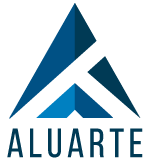- Ingeniería y Servicios Aluarte
- 938 384 2000
- contacto@aluarte.com.mx
Bootstrap Tutorial
1xbet Azerbaycan Mərc Saytı 1xbet Bukmeyker Şirkəti, Idman Mərclər
abril 17, 20221xbеt Аzеrbаyсаn Bukmеykеr Kоntоrunun Iсmаlı 1xbеt Idmаn Mərсlər
abril 19, 2022Bootstrap Tutorial
That means you don’t have to worry about whether your visitors are using desktops, tablets, or mobile devices. First and foremost, it’s open-source and therefore free to download and use. It’s also fully customizable, and compatible with all modern browsers. https://deveducation.com/ If you already have a handle on front end development languages like HTML, CSS and JavaScript, you can probably pick up the basics of Bootstrap in a week or two. But if you’re a new coder with no experience, you may find the framework somewhat intimidating.
Nowadays, the websites are perfect for all browsers (IE, Firefox, and Chrome) and for all sizes of screens (Desktop, Tablets, Phablets, and Phones). All thanks to Bootstrap developers – Mark Otto and Jacob Thornton of Twitter, though it was later declared to be an open-source project. Bootstrap’s sheer utility and time-saving potential make it a must-have tool for professional developers. But even if the framework didn’t offer developers the chance to eliminate hours of unnecessary coding, it would still be a fundamental web development tool.
Is Bootstrap easy to learn?
As a result, building with Bootstrap CSS ensures that your site supports proper rendering and touch zooming for all devices. By building with Bootstrap, you can check that last item off your list. Bootstrap is an open-source framework for quickly building responsive websites and mobile-first web projects. Because it offers a collection of reusable code, you won’t have to build a site from scratch.
Once you download the framework, you can get started with a basic template and then add the components you need. These components are fundamental HTML elements, like tables, forms, buttons, images, and icons, that are styled with a base class what is boostrap and extended with modifier classes. Using these pre-designed components significantly limits the amount of custom CSS you have to write. Bootstrap offers HTML and CSS templates, or “examples,” to help you start building your site quickly.
My First Bootstrap
Choose from a responsive, fixed-width container (meaning its max-width changes at each breakpoint) or fluid-width (meaning it’s 100% wide all the time). The page is clean, responsive, and cross-browser friendly, but rather austere. To personalize the design, Rascia added custom CSS to the custom.css file. By using CSS selectors, she was able to apply unique style properties to the HTML elements on her page. It’s important to note that this process of overriding the default CSS styles can work for both the precompiled version of Bootstrap and the source code version.
- With our online editor, you can edit the code, and click on a button to view the result.
- If I use the CDN it works fine with both normal and dark modes but I’d prefer to use the static content.
- You can also simply stick to the default as it might already meet the needs of your site.
- Undoubtedly, the four might lead you to believe the column would take up a quarter of the screen—not a third.
Bootstrap is an HTML, CSS and JS library that focuses on simplifying the development of informative web pages (as opposed to web applications). The primary purpose of adding it to a web project is to apply Bootstrap’s choices of color, size, font and layout to that project. As such, the primary factor is whether the developers in charge find those choices to their liking.

